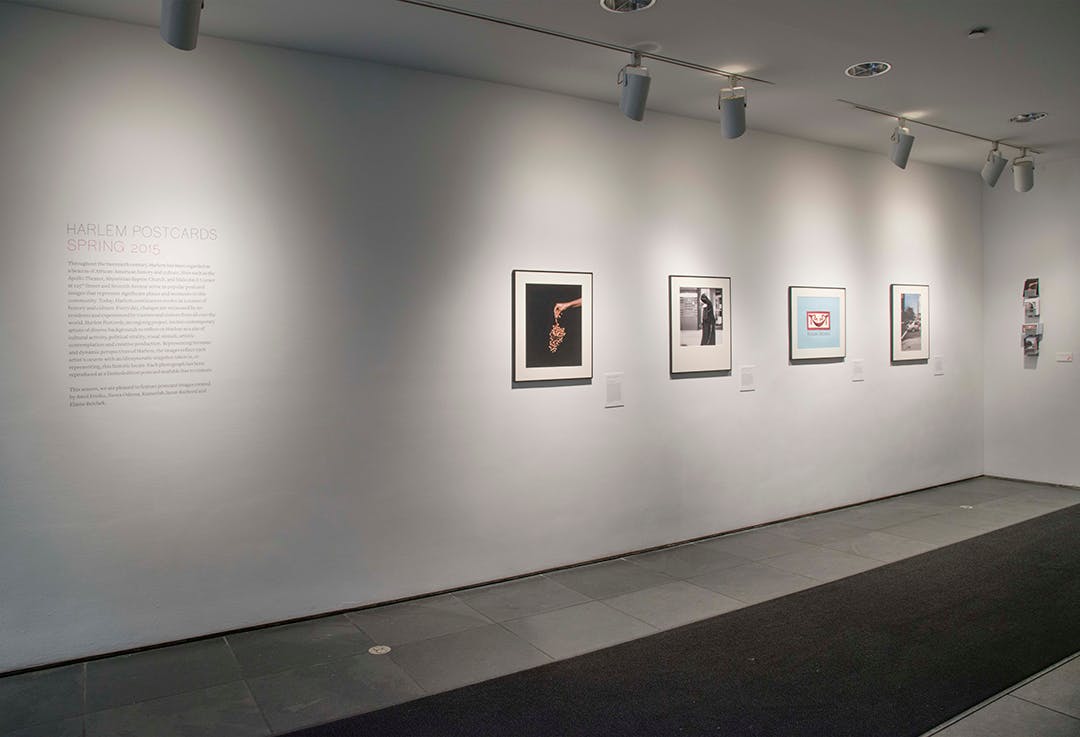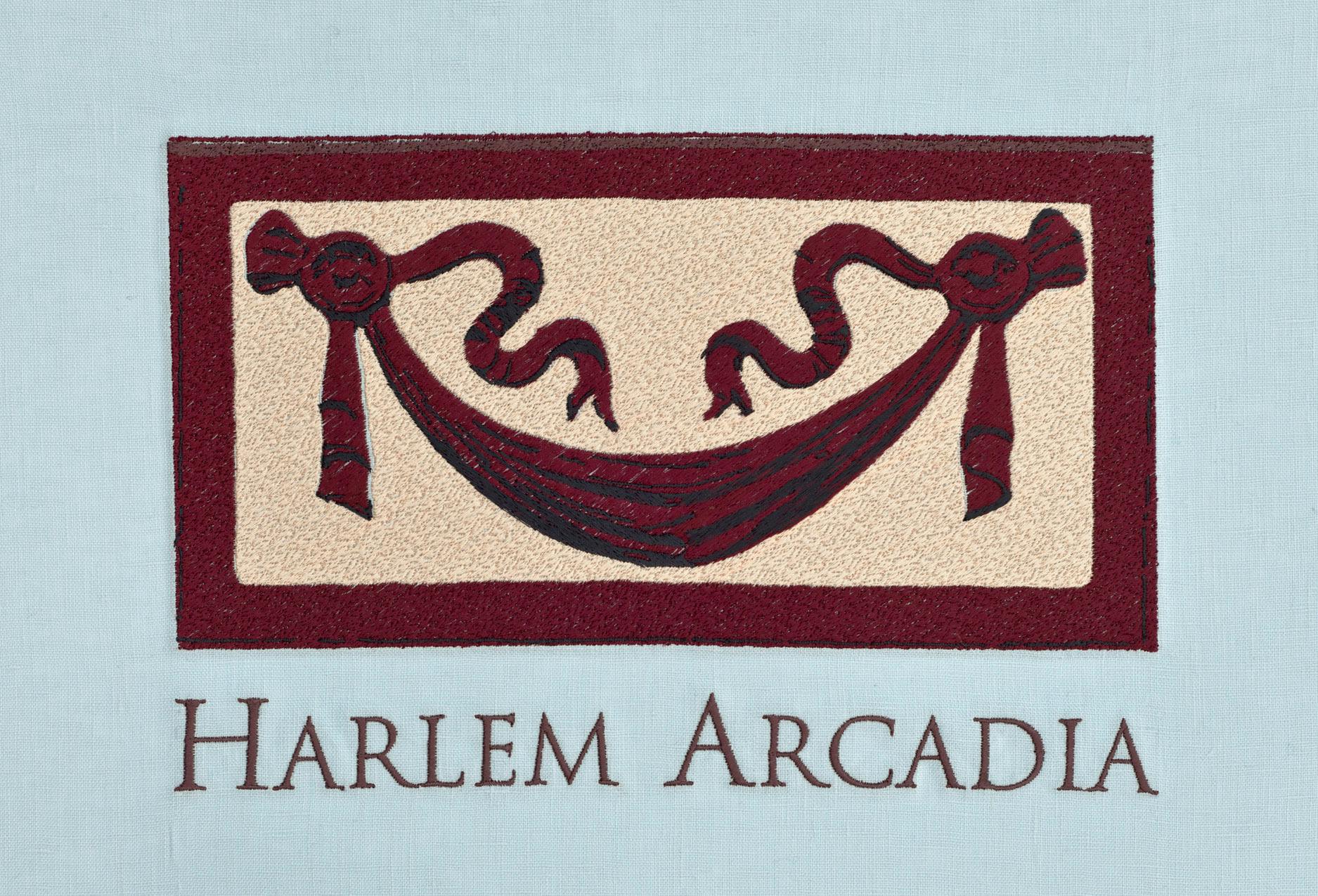Harlem Postcards Spring 2015
03.26-06.28.2015



Working seamlessly across a wide range of media, including photography, sculpture and video installation, Awol Erizku references and remixes disparate artistic movements and traditions, from the photorealist still lifes of Dutch Masters to spare, minimalist constructions—giving them all distinctly twenty-first-century updates. Throughout his work, the New York–born, Los Angeles–based artist strives to correct what he perceives as a marked absence of people of color throughout the canon of art history. He integrates contemporary fabrics, styles and symbols with a provocatively allusive sensibility and aesthetic. Inspired by a shirt the artist purchased on 125th Street, depicting a golden statue of an Egyptian queen, the artist envisions the luxury of being fed grapes, a seemingly common practice among Egyptian royalty.

Miniature miracles and overlooked catastrophes: These are what I find when I stroll the upper island. For a neighborhood whose historical significance comes in such great abundance, there could be more emphasis put on restoring or preserving the buildings that tell the intricate stories of Harlem’s legacy. For many urban developers and city planners, the rebirth, transformation and progression of Harlem mean tearing down the old and replacing with the new. For others, however, each “CLOSED” storefront sign represents yet another blow to Harlem’s unique identity.

From traditional monotheistic faiths established thousands of years ago to new syncretic communities and new religious communities, Harlem has it all. One day, while documenting the
Hebrew Israelites proselytizing on the corner of Lenox and 125th, a Black nun crossed my path. I immediately turned my camera toward her. It was a reminder that while one may be fascinated by the newness of emerging spiritual communities here in Harlem, there is still much to discover about how Black people make sense of traditional faiths established thousands of years ago.

I live and work in Harlem, and my windows face Striver’s Row, two blocks of historically important brownstones. My subject matter often deals with the classics, and many of the buildings close by have beautiful neoclassical ornamentation. One of my great pleasures is to take walks in my neighborhood. This embroidery is derived from a photograph taken on 137th Street on one of those walks.
Harlem Postcards Spring 2015
03.26-06.28.2015



Working seamlessly across a wide range of media, including photography, sculpture and video installation, Awol Erizku references and remixes disparate artistic movements and traditions, from the photorealist still lifes of Dutch Masters to spare, minimalist constructions—giving them all distinctly twenty-first-century updates. Throughout his work, the New York–born, Los Angeles–based artist strives to correct what he perceives as a marked absence of people of color throughout the canon of art history. He integrates contemporary fabrics, styles and symbols with a provocatively allusive sensibility and aesthetic. Inspired by a shirt the artist purchased on 125th Street, depicting a golden statue of an Egyptian queen, the artist envisions the luxury of being fed grapes, a seemingly common practice among Egyptian royalty.

Miniature miracles and overlooked catastrophes: These are what I find when I stroll the upper island. For a neighborhood whose historical significance comes in such great abundance, there could be more emphasis put on restoring or preserving the buildings that tell the intricate stories of Harlem’s legacy. For many urban developers and city planners, the rebirth, transformation and progression of Harlem mean tearing down the old and replacing with the new. For others, however, each “CLOSED” storefront sign represents yet another blow to Harlem’s unique identity.

From traditional monotheistic faiths established thousands of years ago to new syncretic communities and new religious communities, Harlem has it all. One day, while documenting the
Hebrew Israelites proselytizing on the corner of Lenox and 125th, a Black nun crossed my path. I immediately turned my camera toward her. It was a reminder that while one may be fascinated by the newness of emerging spiritual communities here in Harlem, there is still much to discover about how Black people make sense of traditional faiths established thousands of years ago.

I live and work in Harlem, and my windows face Striver’s Row, two blocks of historically important brownstones. My subject matter often deals with the classics, and many of the buildings close by have beautiful neoclassical ornamentation. One of my great pleasures is to take walks in my neighborhood. This embroidery is derived from a photograph taken on 137th Street on one of those walks.
